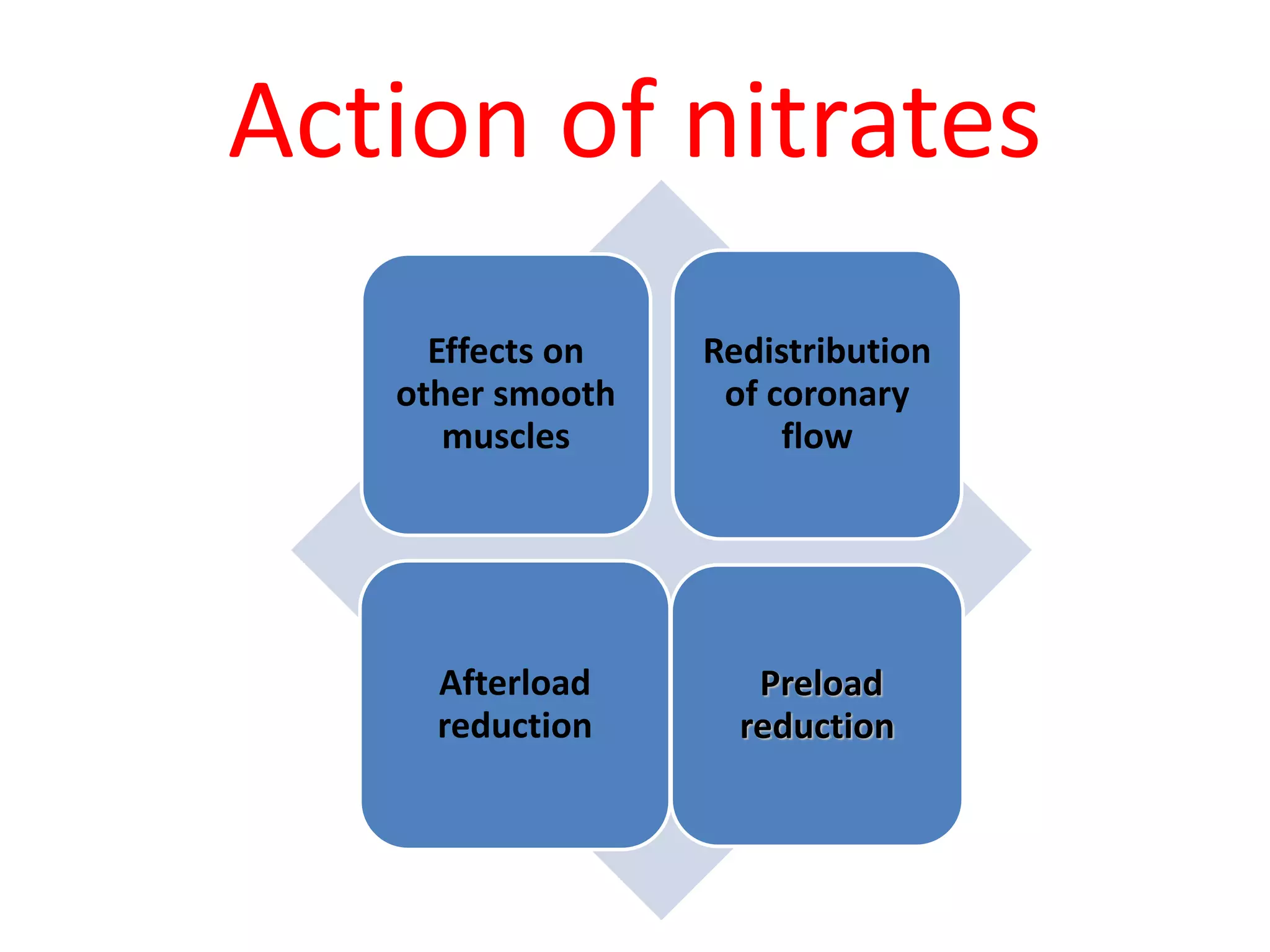This document discusses antianginal drugs used to treat angina pectoris. It describes the three main types of angina and the mechanisms of four classes of antianginal drugs: nitrates, beta-blockers, calcium channel blockers, and potassium channel openers. Nitrates like nitroglycerin and isosorbide are first-line treatments that work by dilating blood vessels to reduce cardiac preload and afterload. Proper administration and storage of nitrates is important to avoid side effects like headaches. Nurses monitor patients and educate them about safe use of antianginal medications.









































